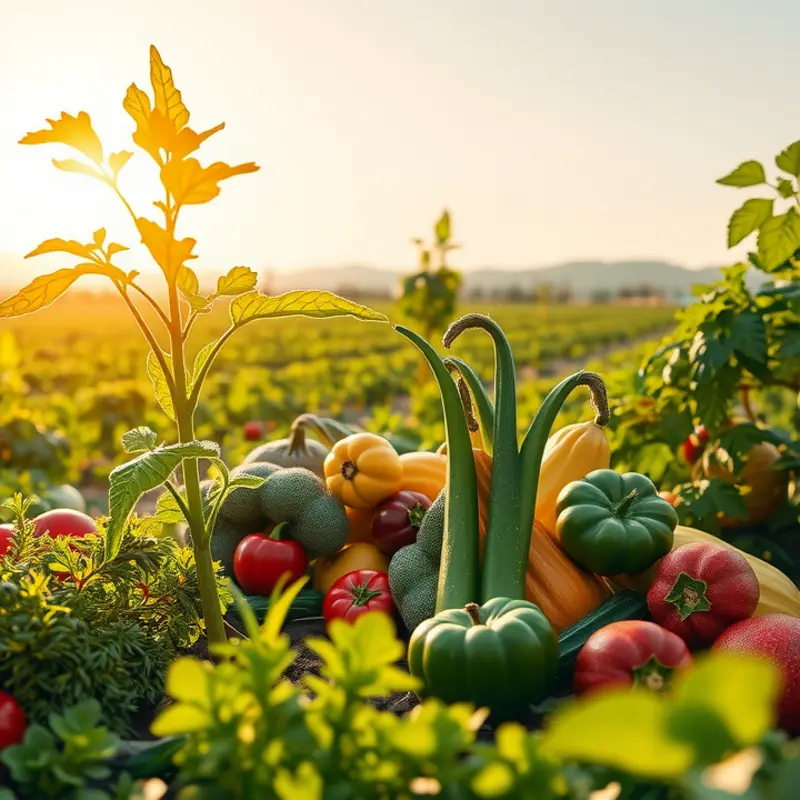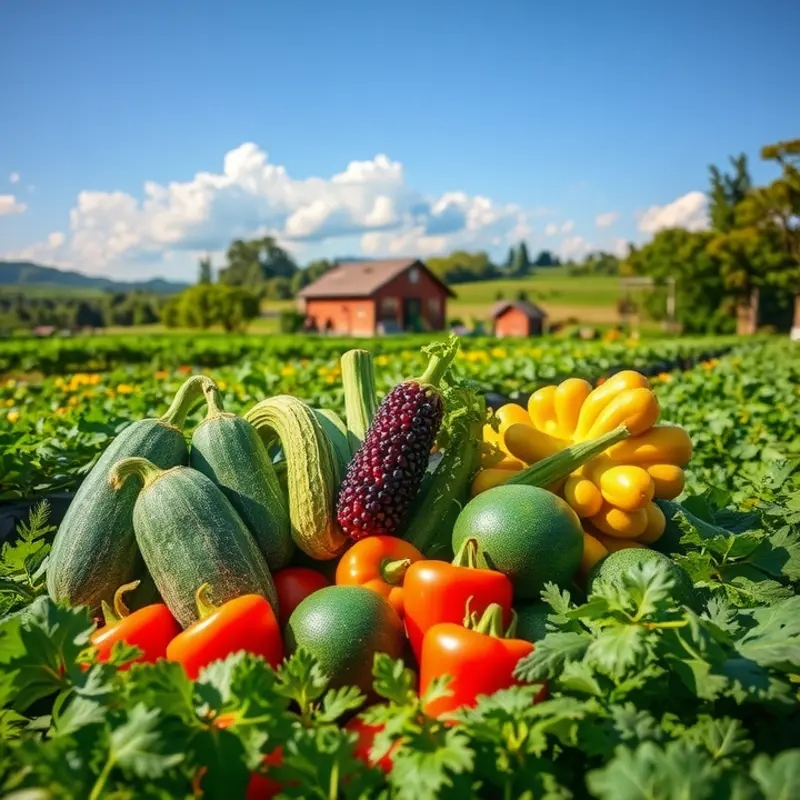Embracing low-emission eating isn’t just a trend; it’s a thoughtful lifestyle choice that can significantly reduce your carbon footprint. By making conscious food choices, from selecting plant-based meals to sourcing local produce, you can indulge in delicious food while supporting the environment. This journey toward sustainable eating can feel overwhelming, but it is both achievable and rewarding. With a little guidance, green food practices can seamlessly integrate into your daily life, benefitting you and the planet.
Understanding the Impact of Your Plate

Food production plays a pivotal role in greenhouse gas emissions, contributing significantly to climate change. The journey of food from farm to plate involves various processes, each adding to the carbon footprint. Understanding the environmental impact of different food types allows us to make choices that support a more sustainable planet.
The carbon footprint of food signifies the total greenhouse gases emitted during its production, processing, and transportation. Animal-based foods, particularly red meats, have the highest carbon footprints. This is primarily due to methane emissions from livestock digestion, land-use for grazing, and the energy-intensive processes of meat processing. Beef, for instance, emits more greenhouse gases per kilogram than any other food type. Reducing consumption of animal-based products is one of the most effective ways to lower dietary carbon emissions.
Contrastingly, plant-based foods generally have a lower carbon footprint. Vegetables, grains, and legumes require fewer resources and generate fewer emissions. A diet rich in these foods supports not only personal health but also environmental sustainability. Transitioning to a plant-based diet, even partially, can significantly reduce your ecological impact.
Seafood presents another perspective. The emissions vary greatly depending on how the fish are caught or farmed. Wild-caught fish typically have lower emissions compared to farmed options, which often rely on significant feed inputs and energy. Still, some aquaculture practices are advancing to reduce their carbon footprints, promoting more sustainable seafood options.
Processed and packaged foods hide additional emissions from energy used in factories and transportation. Prioritizing whole, local, and seasonal foods can reduce these hidden emissions. When we choose foods grown closer to home, we cut down on transportation-related emissions—a small yet impactful step towards a sustainable diet.
Another crucial factor is food waste, a major contributor to greenhouse gases. Globally, about one-third of all food produced is wasted. This not only wastes the resources used in production but also generates emissions when the waste decomposes in landfills. Efficient meal planning and mindful consumption can minimize waste. For practical tips, explore the concept of low-waste cooking to further reduce your carbon footprint.
Even small dietary shifts can bring significant environmental benefits. For instance, reducing red meat consumption just a couple of times a week, or incorporating more plant-based meals, can contribute to lowering overall emissions. Awareness and informed choices are essential in shaping a sustainable future. By considering the environmental impact of our diet, we can each play a part in combatting climate change, one plate at a time.
Cultivating Eco-Friendly Eating Habits

Cultivating eco-friendly eating habits isn’t just a trend but a crucial step towards a sustainable future. By thoughtfully reducing food-related carbon emissions, we take a tangible step in nurturing the environment. Let’s explore practical strategies to master low-emission eating.
Meal Planning and Cooking Methods
Meal planning is fundamental in sustainable eating. Plan meals around ingredients that minimize waste and maximize nutrition. Focus on recipes that require minimal cooking time and energy usage. Cooking methods like steaming, blanching, and baking are preferable to frying, as they consume less energy and preserve more nutritional value.
Batch cooking is another innovative approach. By preparing meals in larger quantities, you leverage energy from a single cooking session across multiple meals, reducing overall carbon emissions. For more inspiration, consider checking out minimal prep dinner ideas.
Choosing Local and Seasonal Ingredients
Opting for local and seasonal ingredients greatly reduces the carbon footprint associated with food transport. Locally sourced produce doesn’t travel vast distances and is typically fresher and packed with nutrients. Research local farmers’ markets and seasonal availability charts to make informed choices.
Seasonal eating also means accepting imperfections in produce. Embracing the beauty of imperfect fruits and vegetables reduces food wastage and supports local farmers.
Embracing Plant-Based Meals
Shifting towards a plant-based diet significantly lowers emissions generated by meat and dairy production. For those new to plant-based eating, start by incorporating one plant-based meal per day. Gradually experiment with diverse recipes that highlight vegetables, grains, and legumes.
Additionally, using alternative protein sources like lentils, beans, and chickpeas offers nutritional variety while keeping your carbon footprint in check. Reducing dependence on animal proteins is both eco-friendly and beneficial to personal health.
Mindful Consumption
Mindful eating encourages awareness of food sources and consumption habits, ensuring a holistic approach to sustainability. Practice portion control to minimize waste, and store leftovers efficiently to extend their usability. This reduces unnecessary food disposal and maximizes resources.
Innovative storage solutions also play a role in reducing food waste. For practical tips on eco-smart kitchen storage, explore eco-smart kitchen storage.
Community Engagement and Education
Engagement with local communities can amplify sustainable eating habits. Participate in food co-ops, community gardens, or cooking workshops. Sharing and gaining knowledge from others helps to cultivate a broader understanding of sustainable practices.
Sustainable eating is a continuous journey. By integrating these strategies, you not only contribute to environmental welfare but also enjoy the diverse flavors and nutritional benefits of earth-conscious meals.
Final words
Transitioning to a low-emission diet is a journey filled with opportunities to explore new flavors and connect with our planet. By being mindful of our food choices, we align with practices that protect the environment. Each small change contributes to a larger impact, demonstrating that individual efforts matter in the grand scheme. Remember, sustainable eating is not just about restrictions; it’s about celebrating nutritious foods while caring for our world. Your culinary adventure awaits, and every sustainable meal creates a ripple effect for a greener future.








